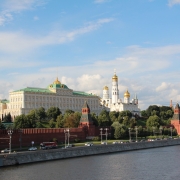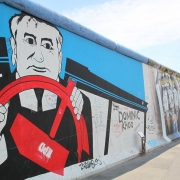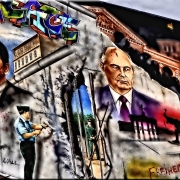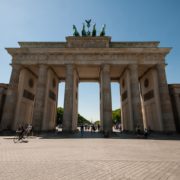Why did the Soviet Union collapse?
Topic of Study [For H2 and H1 History Students]:
Paper 1: Understanding the Cold War (1945-1991)
Section A: Source-based Case Study
Theme I Chapter 3: End of Bipolarity
The dissolution of the Soviet Union: Inevitable or not?
From a retrospective view, not all agree that the collapse of the Soviet Union was expected. In fact, there were forecasts that the Soviet Union might surpass the United States in terms of economic development.
Nevertheless, the Cold War rivalry have undoubtedly impacted the social, economic and political developments of the USSR. In this article, we will cover the consequences of domestic reforms and the rise of nationalism.
Internal Reform #1: Perestroika
Following the ascent of Mikhail Gorbachev, the newly-elected Soviet leader introduced two notable concepts that outlined his domestic reforms: perestroika and glasnost.
Faced with an ailing Soviet economy, Perestroika (which means ‘restructuring’) involved economic restructuring through the reduction of central planning and greater private participation.
For instance, the Law on State Enterprise was passed in June 1987. In this case, state enterprises could set their own output levels based on consumer demand. With their newfound autonomy, these enterprises had to be self-reliant as state financing was absent.
Additionally, the Soviet Joint Venture Law was passed, which allowed foreign investment to flow into the Soviet Union. The government allowed majority foreign ownership.
However, the economic restructuring was ineffective. Contrary to Gorbachev’s expectations, the reforms accelerated the economic collapse of the Soviet Union. In 1991, the Gross Domestic Product (GDP) fell by 17% and inflation rate was at nearly 700%.
The failure of Perestroika was largely traced to the incompatibility of capitalism with communism. For example, the government still maintained a monopoly over the means of production, thereby denying the enterprises of the ability to compete feasibly. Besides, foreign investment was hardly present due to the high degree of resistance from local officials, who feared the loss of political control.
Internal Reform #2: Glasnost
The Glasnost policy (which referred to ‘openness’) was introduced to empower the Russian society by enabling freer flow of information and public involvement in the decision-making processes. By doing so, Gorbachev hoped to restore public trust in the Soviet government, including the desired support for his Perestroika.
For instance, the Soviet government lifted its censorship policies and allowed open political debate. Also, freedom of religion was permitted, which contributed to the restoration of mosques and churches.
Again, the reform proved disastrous for the Gorbachev administration. The policy of “openness” exposed the failures of past leaders, thus causing the erosion of public trust. Critics became more outspoken as they pointed out social and economic problems, like food shortages and housing issues.
More importantly, the availability of political debates influenced the public desire for democratization, which resulted in the mass-based political participation in the Soviet Republics.
Nationalism: A rising tide; A dangerous precipice
In addition to the nationalist movements that took place in the Eastern Europe, there were also political uprisings that broke out within the USSR itself.
From 1988 to 1990, several Soviet Republics declared independence from the Soviet Union. For example, Lithuania, Estonia and Latvia declared their intent to break away from USSR even though the Soviet government rejected it.
Due to Gorbachev’s refusal to use military force against the nationalists, cracks within the political leadership were gradually exposed.
The August Coup
Gorbachev proposed the ‘New Union Treaty’ in 1991 to maintain a semblance of central authority while granting the republics their desired sovereign rights. However, nearly half of the republics rejected the proposal.
High-ranking officials within the Soviet government launched a coup against Gorbachev in August 1991. This event became a turning point as Russian President Boris Yeltsin garnered support to end the coup. Eventually, the coup ended and Gorbachev resigned.
On 26 December 1991, following the Belavezha Accords, the dissolution of the USSR began. The declaration recognised the official independence of the former Soviet Republics and the subsequent creation of the Commonwealth of Independent States (CIS). In other words, the collapse of the USSR signalled the end of the Cold War.
What can we learn from this article?
Consider the following question:
– How far do you agree that domestic reforms were the main reason for the dissolution of the USSR? [to be discussed in class]
Now that you have considered the contributing factors that explained the collapse of the USSR, it is imperative that you attempt source-based case study questions relating to this topic, also known as the End of Bipolarity. Additionally, you can join our JC History Tuition. We impart you with the thinking and writing skills to improve your quality of answers, such as information extraction, reliability and utility assessment.
The H2 and H1 History Tuition feature online discussion and writing practices to enhance your knowledge application skills. Get useful study notes and clarify your doubts on the subject with the tutor. You can also follow our Telegram Channel to get useful updates.
We have other JC tuition classes, such as JC Math Tuition and JC Chemistry Tuition. For Secondary Tuition, we provide Secondary English Tuition, Secondary Math tuition, Secondary Chemistry Tuition, Social Studies Tuition, Geography, History Tuition and Secondary Economics Tuition. For Primary Tuition, we have Primary English, Math and Science Tuition. Call 9658 5789 to find out more.




